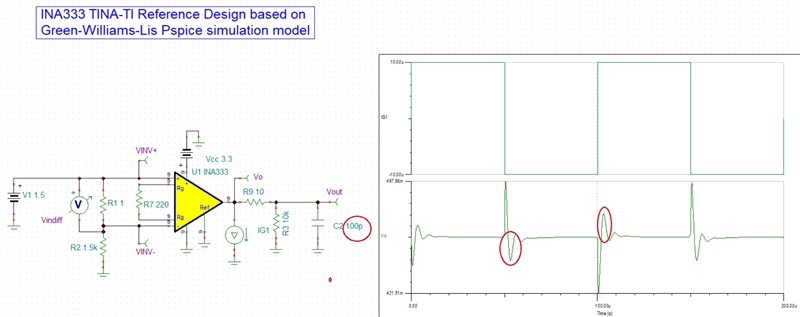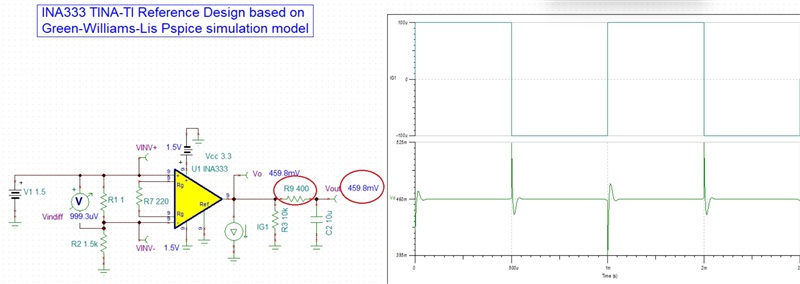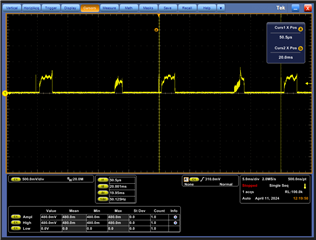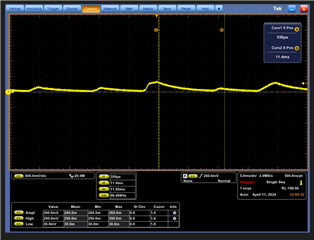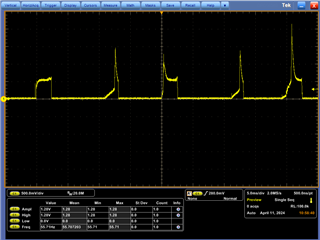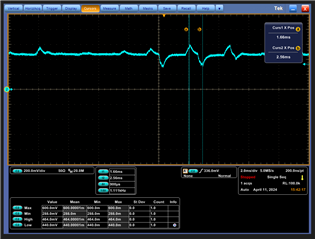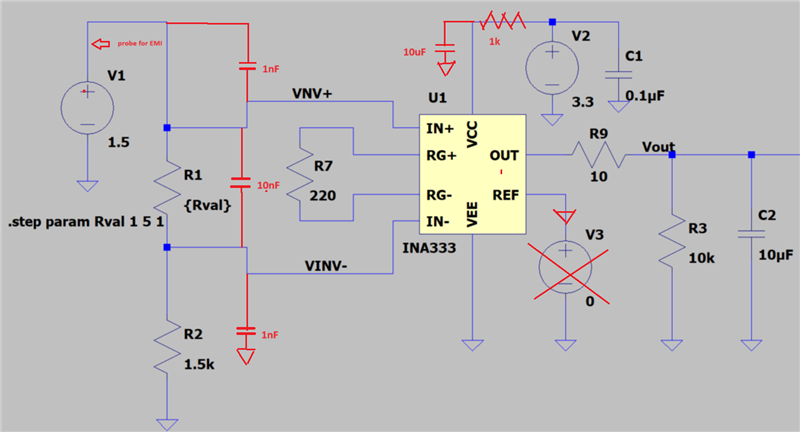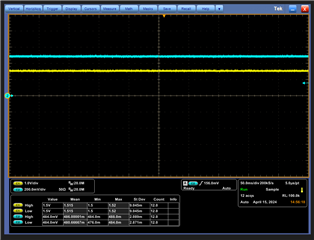Other Parts Discussed in Thread: TINA-TI
Hi,
Recently, I tried few experiments by using Eval board: INAEVM-MSOP8 along with the INA333. In order to emulate the load cell (whose wheatstone bridge nominal resistance is 360 ohm) and the differential bridge voltages from load cell upto 5mV.
By looking at the similar question in the previous forum, I just made simple electric circuit by using the breadboard arrangement.
V+ = 3.3V, V- = GND, Vref =GND, Gain = 455
Schematic:

Breadboard arrangement:
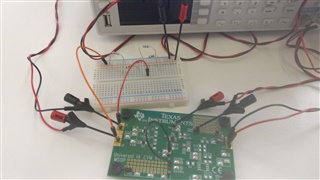
Just to emulate the 1mV to 4mV small signals, I placed four 1 Ohm resistors in series with the 1.5kOhm.
For the 1.086 mV signal across 1 Ohm resistor is connected between V+IN and V-IN. Theory Vout = Gain*Vdiff = 1.086 mV* 455 = 494.13 mV DC
But observe the following oscillating Vout result from Oscilloscope
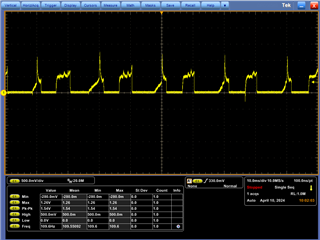
For 2.26mV input signal, the observed oscilloscope- Oscillating Vout result
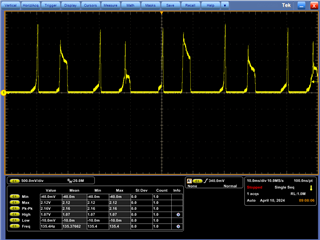
Could you please let me know if I require any better schematic or by improving the measurement methods to get smooth DC Vout signal from Oscilloscope?
Thanks & Regards,
Sairam



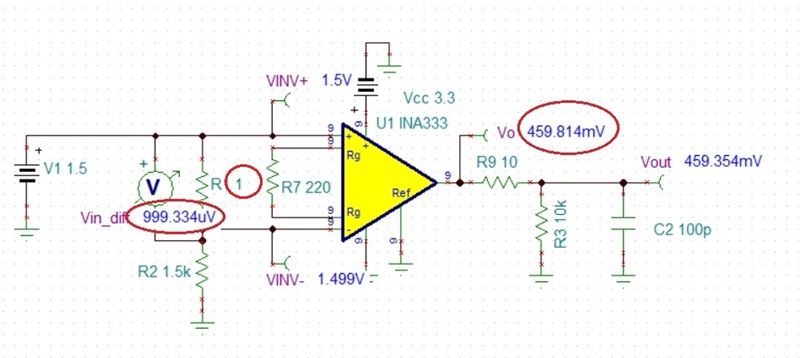
 .
.